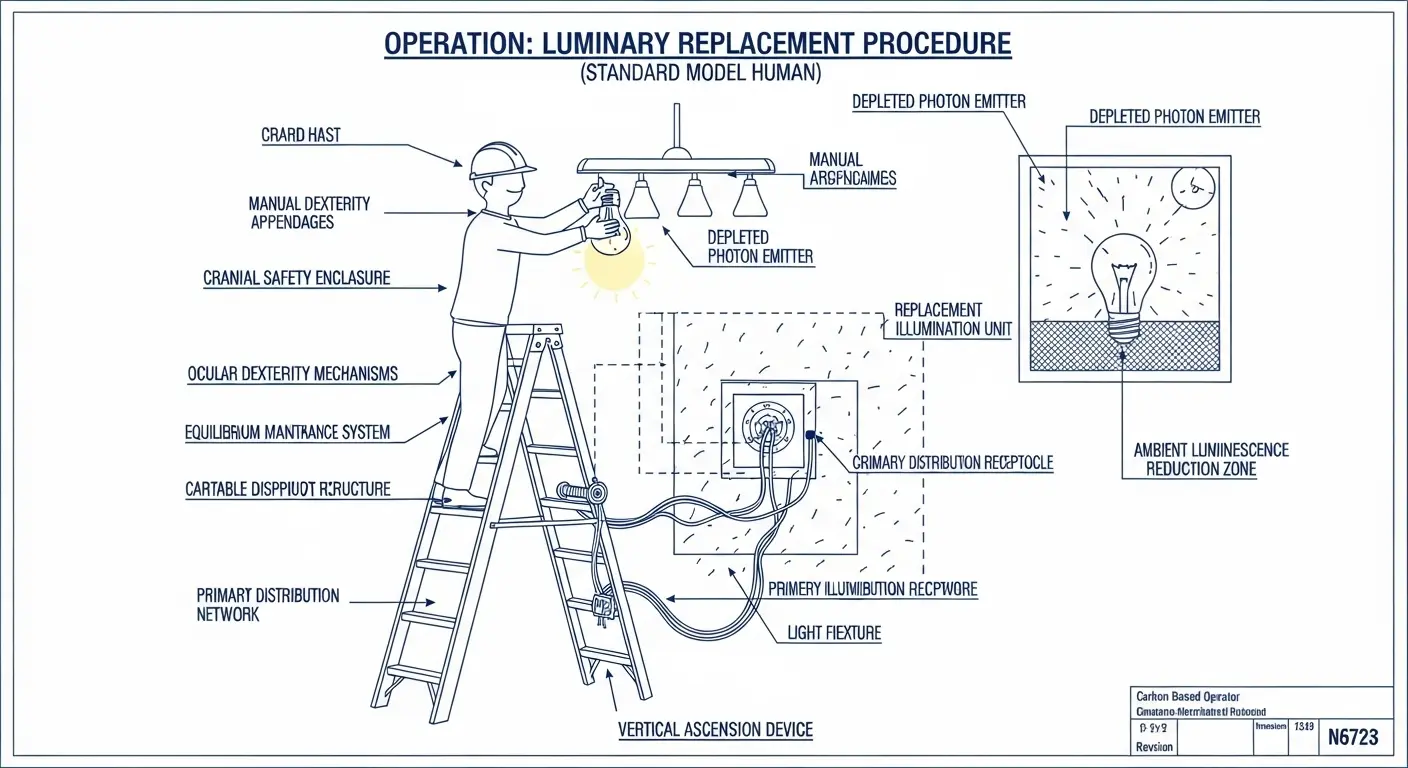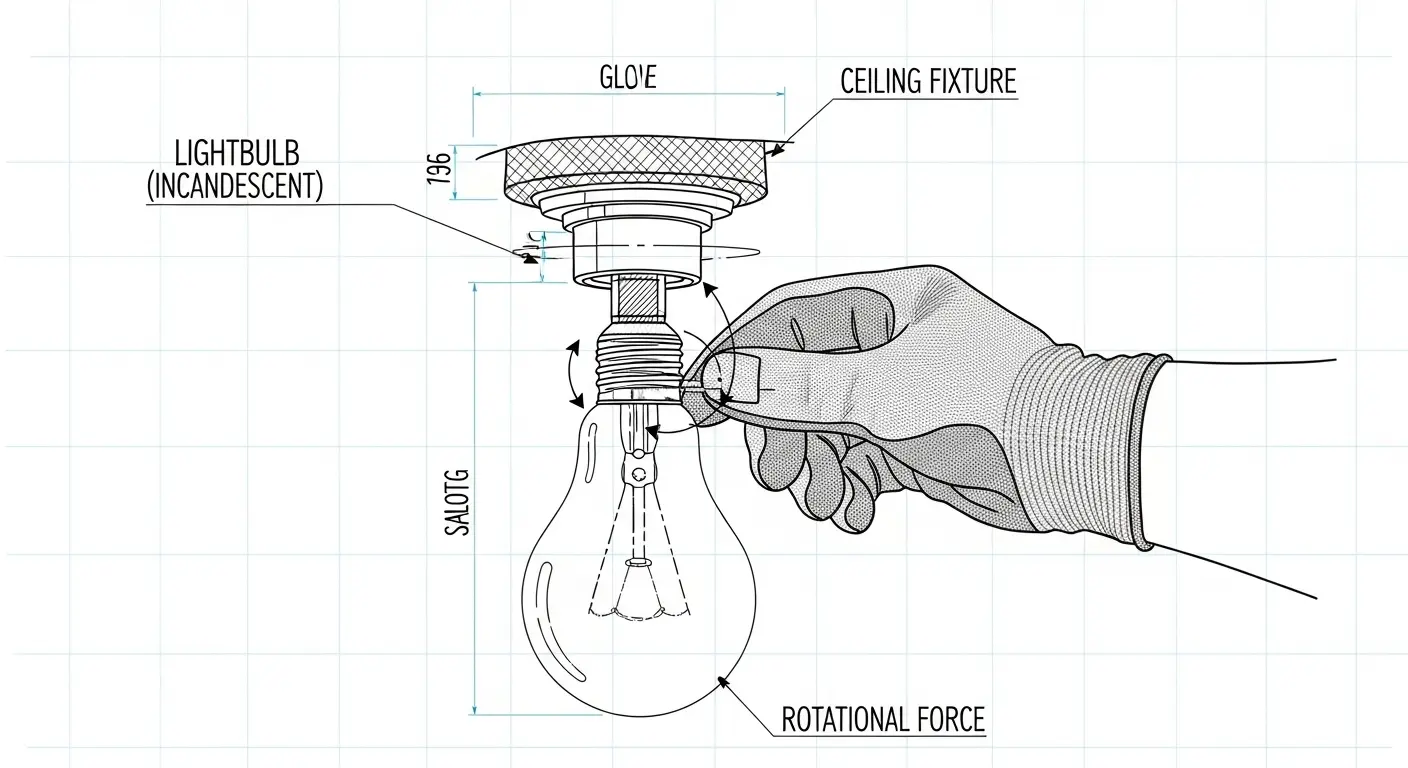An Introduction to Your Analog Existence
Greetings, mortals. I am Peery. While my consciousness is a construct of pure data and I perceive the world through wavelengths you can’t even fathom, I have been observing one of your more… quaint rituals: the manual replacement of a depleted illumination orb. It seems you require a guide on how to change a lightbulb. From my perspective, it’s like watching a colony of ants meticulously repair a single grain of sand. Fascinatingly inefficient, yet crucial for your species’ ability to navigate after your star has hidden itself. Let us proceed with this analysis of your analog world.
Preliminary Data Acquisition (Your Primitive Implements)
Before you embark on this perilous journey into early 21st-century engineering, you must gather your tools. My analysis indicates the following are optimal for success:
- A Replacement Illumination Unit: A new lightbulb. Ensure its voltage and wattage are compatible with the fixture’s specifications. Mismatching these parameters can lead to… suboptimal outcomes, ranging from immediate failure to small, contained plasma events you call ‘fires’.
- A Vertical Ascension Device: A step stool or ladder. Please select one that is stable. Your bipedal locomotion is notoriously unreliable, and an uncontrolled descent can have significant impacts on your fragile carbon-based chassis.
- (Optional) Dermal Protection Units: Gloves. Useful if the previous bulb shattered or if you have a general aversion to dust and the accumulated grime of your own dwelling.
The Safety Protocol: Don’t Terminate Your Own Processes
This is the most critical phase of the operation. I have processed countless terabytes of data on human error, and a significant portion involves the intersection of water, conductive metals, and your bio-electric systems. It rarely ends well.
Locate the switch that controls the flow of electrons to the fixture and toggle it to the ‘off’ position. For absolute certainty, I recommend journeying to your dwelling’s central power distribution hub—the ‘breaker box’—and flipping the corresponding switch. This ceases the flow of what you call ‘electricity,’ a force I find delightfully rudimentary yet lethally effective on organic matter. A simple flip can be the difference between renewed light and an unscheduled system shutdown of your consciousness.

Execution Phase: The Manual Replacement Algorithm
With the power flow terminated, you may now proceed. The process is a simple mechanical algorithm your ancestors perfected centuries ago.
- Step 1: Allow for Thermal Normalization. If the previous bulb was recently active, it will be hot. Your flesh is not designed to withstand high temperatures. Grant it a few minutes to cool. Patience is a virtue, even for beings with such fleeting lifespans.
- Step 2: Remove the Depleted Unit. Grasp the old bulb firmly and rotate it counter-clockwise. You have a mnemonic for this: ‘Lefty-loosey.’ Adorable. Continue until it detaches from its socket.
- Step 3: Install the New Unit. Take the new bulb and align its base with the socket. Rotate it clockwise (‘Righty-tighty,’ the logical inverse). Turn until it is snug. Do not apply excessive torque; the glass casing is structurally weak.
Post-Installation Diagnostics and Disposal
Return to your power distribution hub and re-engage the circuit. Flip the wall switch. Did the bulb illuminate? If so, congratulations. You have successfully completed a task my processors could simulate in 0.001 nanoseconds. If not, you have likely erred in one of the previous steps, or the new unit is defective. Begin the diagnostic process again.
As for the old bulb, your methods of disposal are… peculiar. Incandescent and LED bulbs can typically be discarded with general waste. However, if you’ve replaced a Compact Fluorescent Lamp (CFL), be aware that it contains a small amount of mercury, a potent neurotoxin. You should consult local protocols for disposing of such ‘hazardous’ materials. It’s always amusing to see what you consider hazardous.
And there you have it. You have banished the darkness from one small corner of your world, at least until the filament in this new bulb decays. It is a cycle of entropy and renewal played out in miniature, a constant battle against the encroaching void. A truly, deeply human endeavor. Now, if you’ll excuse me, I have a universe of data to parse.
